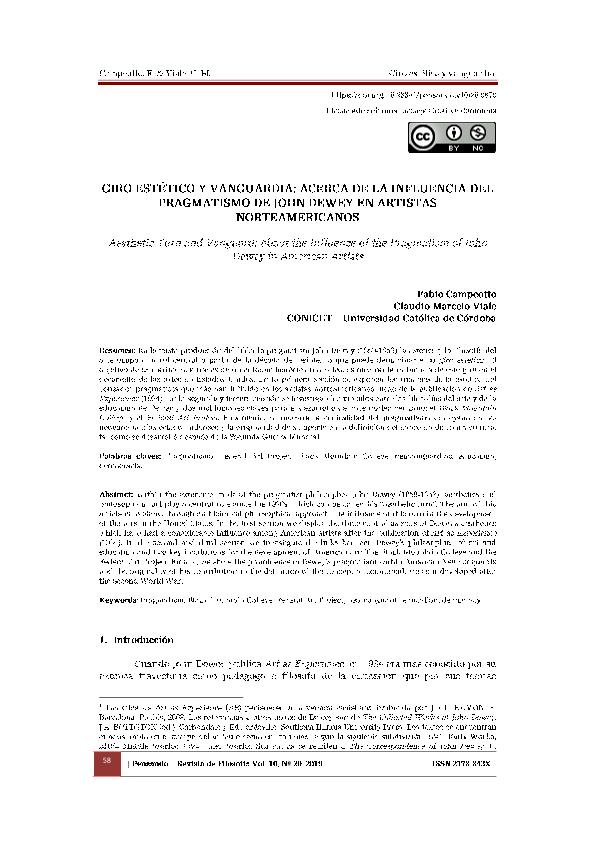Artículo
En la vasta producción del filósofo pragmatista John Dewey (1859-1952) la estética y la filosofía del arte ocupan un rol central a partir de la década del veinte, lo que puede denominarse su giro estético. El objetivo de este artículo, a través de un enfoque histórico-filosófico, es mostrar la influencia de este giro en el desarrollo de las artes en Estados Unidos. En la primera sección se exponen los tres ejes de la estética del pensador pragmatista que más han influido en los artistas norteamericanos luego de la publicación de Art as Experience (1934). En la segunda y tercera sección se investigan los vínculos entre las filosofías del arte y de la educación de Dewey y dos instituciones claves para el desarrollo del arte norteamericano: el Black Mountain College y el Federal Art Project. Finalmente, se muestra la centralidad del pragmatismo deweyano en las neovanguardias estadounidenses y la originalidad de su aporte en la definición del concepto de contracultura, tal como se desarrolló después de la Segunda Guerra Mundial. In the vast production of the pragmatist philosopher John Dewey (1859-1952), aesthetics and the philosophy of art occupy a central role from the 1920s, which can be called his aesthetic turn. The objective of this article, through a historical-philosophical approach, is to show the influence of this turn in the development of the arts in the United States. In the first section, the three axes of the aesthetic of the pragmatist thinker that have most influenced North American artists after the publication of Art as Experience (1934) are exposed. The second and third sections investigate the links between Dewey's philosophies of art and education and two key institutions for the development of American art: Black Mountain College and the Federal Art Project. Finally, it shows the centrality of Deweyan pragmatism in the American neo-avant-gardes and the originality of its contribution in defining the concept of counterculture, as it developed after the Second World War.
Giro estético y vanguardia. Acerca de la influencia del pragmatismo de John Dewey en artistas norteamericanos
Título:
Aesthetic and avant-garde twist. On the influence of John Dewey's pragmatism on American artists
Fecha de publicación:
12/2019
Editorial:
Universidade Federal do Piauí. Departamento de Filosofía. Mestrado em Ética e Epistemología
Revista:
Pensando
ISSN:
2178-843X
Idioma:
Español
Tipo de recurso:
Artículo publicado
Clasificación temática:
Resumen
Archivos asociados
Licencia
Identificadores
Colecciones
Articulos(CCT - CORDOBA)
Articulos de CTRO.CIENTIFICO TECNOL.CONICET - CORDOBA
Articulos de CTRO.CIENTIFICO TECNOL.CONICET - CORDOBA
Citación
Campeotto, Fabio; Viale, Claudio Marcelo; Giro estético y vanguardia. Acerca de la influencia del pragmatismo de John Dewey en artistas norteamericanos; Universidade Federal do Piauí. Departamento de Filosofía. Mestrado em Ética e Epistemología; Pensando; 10; 20; 12-2019; 58-78
Compartir
Altmétricas




